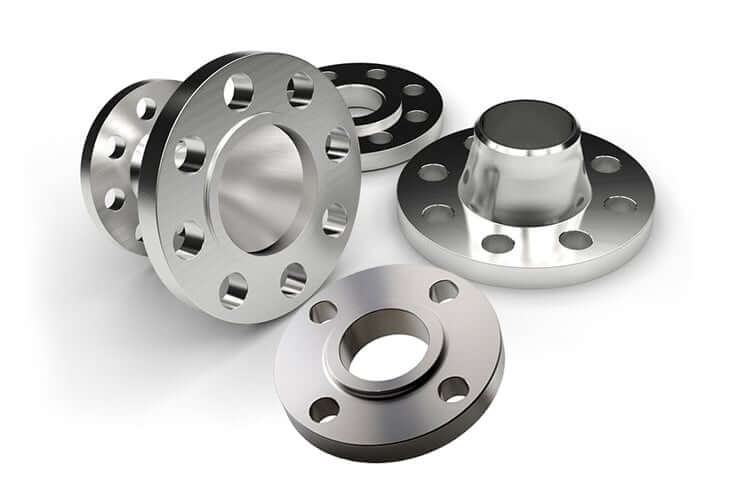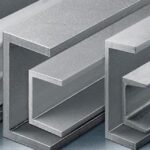ANSI FLANGE PRESSURE RATING EXPLAINED
What exactly is a flange and how does it work?
Flanges are a type of machinery used to join pipes, pumps, valves, and other piping parts to create pipeline systems. Because it makes cleaning, inspecting, and modifying the piping system easier, the flange is a crucial component. There are many different kinds of flanges, including Weld Neck Flanges, Slip-on Flanges, Socket Weld Flanges, Lap Joint Flanges, Threaded Flanges, Blind Flanges, Orifice Flanges, Reducing Flanges, and many more.
How the Flange Rating System Works
People who are new to the pipe industry usually struggle to comprehend how flange rating functions. Before starting the subject, let’s describe a flange and the function it serves in the plumbing industry.
What is the flange rating and how does it work?
The flanges used in the oil, gas, and petrochemical sectors must be able to withstand the pressures and temperatures they are subjected to. The rating is equally important to the size of the flanges. Therefore, choosing a flange with the right rating guarantees that it can withstand the stresses of operating at various temperatures. The class of a flange determines the maximum pressure it can support at high or rising temperatures. Higher flange ratings or flange classes are regarded as stronger by default because they can resist more pressure at higher temperatures.
The industrial standard for flanges is ASME B16.5, which is applicable to pipe flanges and flanged fittings. This has flanges with sizes between 12′′ NPS and 24′′ NPS. As a result, the maximum permitted pressure decreases as temperature increases. The concept of flange rating can be easily explained using the example below.
Because it is comprised of more metal and can withstand greater pressure, a Class 300 flange can withstand higher pressure than a Class 150 flange. However, a flange’s capacity for pressure is influenced by a variety of variables. A Class 300 flange can resist more pressure than a Class 150 flange because it is made of more metal and can do so. On the other hand, a flange’s ability to withstand pressure is affected by a number of factors.
Now consider what this means in terms of pressure rating:
The class 150 flange can only support 140 pounds per square inch (psi) of pressure at 600 degrees F. (as per the rating chart below)At 600 degrees Fahrenheit, the class 300 flange, which is bigger and stronger but has the same hole size, can withstand 570 psi. A class 2500 flange of the same size that has a rating of 4730 psi at 600 °F can withstand 34 times the pressure of a class 150 flange, in conclusion. The rating table for your flange can be found by scrolling down (this depends on the material of the flange, as flanges with different material grades have different pressure ratings)
Find the highest temperature that your pipe system can withstand (i.e. select one line in the table)Based on the anticipated maximum pressure at that temperature, select a rating (i.e. select one column in that line)Now you have the necessary rating! The pressure rating charts for the most popular flange materials per ASME B16.34 are provided below for your reference (carbon, alloy, stainless).
The maximum pressure that a flange can withstand as temperature increases is known as the pressure rating. Seven pressure ratings for flanges are listed in the ANSI/ASME B16.5 standard: 150, 300, 400, 600, 900, 1500, and 2500. When referring to how a flange manages pressure and temperature, the phrases “pressure rating,” “class,” “#,” “Lb,” and “Lbs” all have the same meaning (and other equipment like valves, fittings, etc).
Let’s use an illustration to illustrate this:
The class 150 flange will be smaller, lighter, and less durable than the class 300 flange if two flanges have the same bore size, say 6 inches, the same material, and Different pressure ratings, say class 150 and class 300, but with the same airflow, say A105. (class 300). The image depicts the following:
CARBON STEEL FLANGE RATING CHART
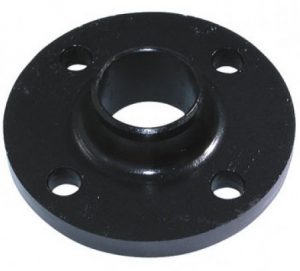
ANSI FLANGE ASTM A105, A350 Gr. LF2/LF6 Class 1
The maximum pressure for flanges of classes 150/300/400/600/900/1500/2500 at increasing temperatures (Celsius or Fahrenheit) – in PSI – is shown in the flange rating table.
| ANSI/ASME B16.34 | ANSI PRESSURE RATING | ||||||
| Temperature (in F°) | 150# | 300# | 400# | 600# | 900# | 1500# | 2500# |
| < 100 | 285 | 740 | 985 | 1480 | 2220 | 3705 | 6170 |
| 200 | 260 | 680 | 905 | 1360 | 2035 | 3395 | 5655 |
| 300 | 230 | 655 | 870 | 1310 | 1965 | 3270 | 5450 |
| 400 | 200 | 635 | 845 | 1265 | 1900 | 3170 | 5280 |
| 500 | 170 | 605 | 805 | 1205 | 1810 | 3015 | 5025 |
| 600 | 140 | 570 | 755 | 1135 | 1705 | 2840 | 4730 |
| 650 | 125 | 550 | 730 | 1100 | 1650 | 2745 | 4575 |
| 700 | 110 | 530 | 710 | 1060 | 1590 | 2655 | 4425 |
| 750 | 95 | 505 | 675 | 1015 | 1520 | 2535 | 4230 |
| 800 | 80 | 410 | 550 | 825 | 1235 | 2055 | 3430 |
| 850 | 65 | 320 | 425 | 640 | 955 | 1595 | 2655 |
| 900 | 50 | 230 | 305 | 460 | 690 | 1150 | 1915 |
| 950 | 35 | 135 | 185 | 275 | 410 | 685 | 1145 |
| 1000 | 20 | 85 | 115 | 170 | 255 | 430 | 715 |
| Hydrostatic Test Pressure (in Psig) | 450 | 1125 | 1500 | 2225 | 3350 | 5575 | 9275 |
Notes
The maximum pressure for flanges of classes 150/300/400/600/900/1500/2500 at increasing temperatures (Celsius or Fahrenheit) – in bars – is shown in the flange rating table.
| ANSI/ASME B16.34 | ANSI PRESSURE RATING | ||||||
| Temperature in C° | 150# | 300# | 400# | 600# | 900# | 1500# | 2500# |
| -29 / 38 | 19.6 | 51.1 | 68.1 | 102.1 | 153.2 | 255.3 | 425.5 |
| 50 | 19.2 | 50.1 | 66.8 | 100.2 | 150.4 | 250.6 | 417.7 |
| 100 | 17.7 | 46.6 | 62.1 | 93.2 | 139.8 | 233 | 388.3 |
| 150 | 15.8 | 45.1 | 60.1 | 90.2 | 135.2 | 225.4 | 375.6 |
| 200 | 13.8 | 43.8 | 58.4 | 87.6 | 131.4 | 219 | 365 |
| 250 | 12.1 | 41.9 | 55.9 | 83.9 | 125.8 | 209.7 | 349.5 |
| 300 | 10.2 | 39.8 | 53.1 | 79.6 | 119.5 | 199.1 | 331.8 |
| 325 | 9.3 | 38.7 | 51.6 | 77.4 | 116.1 | 193.6 | 322.6 |
| 350 | 8.4 | 37.6 | 50.1 | 75.1 | 112.7 | 187.8 | 313 |
| 375 | 7.4 | 36.4 | 48.5 | 72.7 | 109.1 | 181.8 | 303.1 |
| 400 | 6.5 | 34.7 | 46.3 | 69.4 | 104.2 | 173.6 | 289.3 |
| 425 | 5.5 | 28.8 | 38.4 | 57.5 | 86.3 | 143.8 | 239.7 |
| 450 | 4.6 | 23 | 30.7 | 46 | 69 | 115 | 191.7 |
| 475 | 3.7 | 17.4 | 23.2 | 34.9 | 52.3 | 87.2 | 145.3 |
| 500 | 2.8 | 11.8 | 15.7 | 23.5 | 35.3 | 58.8 | 97.9 |
Notes:
ASTM A105: Steel’s carbide phase turns into graphite when exposed to temperatures over 425°C for an extended period of time (this material is not recommended for consistent temperatures above this number).
According to the ASTM A350 LF6 standard, it shouldn’t be used at temperatures more than 260 degrees Celsius.
ANSI FLANGE Class 2 ASTM A350 Gr. LF3, A350 LF6,
The maximum pressure for flanges of classes 150, 300, 400, 600, 900, 1500, and 2500 at various temperatures (in degrees Celsius or Fahrenheit) is shown on the flange rating chart in PSI.
| ANSI/ASME B16.34 | ANSI PRESSURE RATING | ||||||
| Temperature in °F | 150# | 300# | 400# | 600# | 900# | 1500# | 2500# |
| -20 to 100 | 290 | 750 | 1000 | 1500 | 2250 | 3750 | 6250 |
| 200 | 260 | 750 | 1000 | 1500 | 2250 | 3750 | 6250 |
| 300 | 230 | 730 | 970 | 1455 | 2185 | 3640 | 6070 |
| 400 | 200 | 705 | 940 | 1410 | 2115 | 3530 | 5880 |
| 500 | 170 | 665 | 885 | 1330 | 1995 | 3325 | 5540 |
| 600 | 140 | 605 | 805 | 1210 | 1815 | 3025 | 5040 |
| 650 | 125 | 590 | 785 | 1175 | 1765 | 2940 | 4905 |
| 700 | 110 | 570 | 755 | 1135 | 1705 | 2840 | 4730 |
| 750 | 95 | 505 | 670 | 1010 | 1510 | 2520 | 4200 |
| 800 | 80 | 410 | 550 | 825 | 1235 | 2060 | 3430 |
| 850 | 65 | 270 | 355 | 535 | 805 | 1340 | 2230 |
| 900 | 50 | 170 | 230 | 345 | 515 | 860 | 1430 |
| 950 | 35 | 105 | 140 | 205 | 310 | 515 | 860 |
| 1000 | 20 | 50 | 70 | 105 | 155 | 260 | 430 |
ANSI FLANGE ASTM A350 Gr. LF1
The maximum pressure for flanges of classes 150/300/400/600/900/1500/2500 at increasing temperatures (Celsius or Fahrenheit) — in PSI — is shown in the flange rating table.
| ANSI/ASME B16.34 | ANSI PRESSURE RATING | ||||||
| Temperature °F | 150# | 300# | 400# | 600# | 900# | 1500# | 2500# |
| -20 to 100 | 235 | 620 | 825 | 1235 | 1850 | 3085 | 1545 |
| 200 | 215 | 560 | 750 | 1125 | 1685 | 2810 | 4680 |
| 300 | 210 | 550 | 730 | 1095 | 1640 | 2735 | 4560 |
| 400 | 200 | 530 | 705 | 1060 | 1585 | 2645 | 4405 |
| 500 | 170 | 500 | 665 | 995 | 1495 | 2490 | 4150 |
| 600 | 140 | 455 | 610 | 915 | 1370 | 2285 | 3805 |
| 650 | 125 | 450 | 600 | 895 | 1345 | 2245 | 3740 |
| 700 | 110 | 450 | 600 | 895 | 1345 | 2245 | 3740 |
| 750 | 95 | 445 | 590 | 885 | 1325 | 2210 | 3685 |
| 800 | 80 | 370 | 495 | 740 | 1110 | 1850 | 3085 |
| 850 | 65 | 270 | 355 | 535 | 805 | 1340 | 2230 |
| 900 | 50 | 170 | 230 | 345 | 515 | 860 | 1430 |
| 950 | 35 | 105 | 140 | 205 | 310 | 515 | 860 |
| 1000 | 20 | 50 | 70 | 105 | 155 | 260 | 430 |
ALLOY STEEL FLANGE RATING CHART
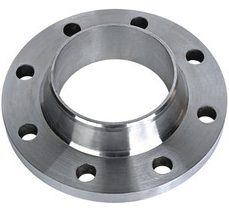
Alloy steel flange pressure-temperature rating ASME
ANSI FLANGE ASTM A182 Gr. F1 (Chrome Moly)
The maximum pressure for flanges of classes 150/300/400/600/900/1500/2500 at increasing temperatures (in Celsius or Fahrenheit) – in PSI – is shown in the flange rating table.
| ANSI/ASME B16.34 | ANSI PRESSURE RATING | ||||||
| Temperature °F | 150# | 300# | 400# | 600# | 900# | 1500# | 2500# |
| -20 to 100 | 265 | 695 | 925 | 1390 | 2085 | 3470 | 5785 |
| 200 | 260 | 680 | 905 | 1360 | 2035 | 3395 | 5660 |
| 300 | 230 | 655 | 870 | 1305 | 1955 | 3260 | 5435 |
| 400 | 200 | 640 | 855 | 1280 | 1920 | 3200 | 5330 |
| 500 | 170 | 620 | 830 | 1245 | 1865 | 3105 | 5180 |
| 600 | 140 | 605 | 805 | 1210 | 1815 | 3025 | 5040 |
| 650 | 125 | 590 | 785 | 1175 | 1765 | 2940 | 4905 |
| 700 | 110 | 570 | 755 | 1135 | 1705 | 2840 | 4730 |
| 750 | 95 | 530 | 710 | 1065 | 1595 | 2660 | 4430 |
| 800 | 80 | 510 | 675 | 1015 | 1525 | 2540 | 4230 |
| 850 | 65 | 485 | 650 | 975 | 1460 | 2435 | 4060 |
| 900 | 50 | 450 | 600 | 900 | 1350 | 2245 | 3745 |
| 950 | 35 | 280 | 375 | 560 | 845 | 1405 | 2345 |
| 1000 | 20 | 165 | 220 | 330 | 495 | 825 | 1370 |
STAINLESS STEEL FLANGE RATING CHART
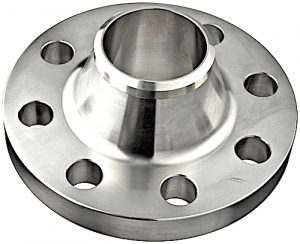
ANSI FLANGE ASTM A182 Gr. F304, 304L
The maximum pressure for flanges of classes 150/300/400/600/900/1500/2500 at increasing temperatures (Celsius or Fahrenheit) – in PSI – is shown in the flange rating table.
| ANSI/ASME B16.34 | ANSI PRESSURE RATING | ||||||
| Temperature °F | 150# | 300# | 400# | 600# | 900# | 1500# | 2500# |
| -20 to 100 | 275 | 720 | 960 | 1440 | 2160 | 3600 | 6000 |
| 200 | 230 | 600 | 800 | 1200 | 1800 | 3000 | 5000 |
| 300 | 205 | 540 | 720 | 1080 | 1620 | 2700 | 4500 |
| 400 | 190 | 495 | 660 | 995 | 1490 | 2485 | 4140 |
| 500 | 170 | 465 | 620 | 930 | 1395 | 2330 | 3880 |
| 600 | 140 | 435 | 580 | 875 | 1310 | 2185 | 3640 |
| 650 | 125 | 430 | 575 | 860 | 1290 | 2150 | 3580 |
| 700 | 110 | 425 | 565 | 850 | 1275 | 2125 | 3540 |
| 750 | 95 | 415 | 555 | 830 | 1245 | 2075 | 3460 |
| 800 | 80 | 405 | 540 | 805 | 1210 | 2015 | 3360 |
| 850 | 65 | 395 | 530 | 790 | 1190 | 1980 | 3300 |
| 900 | 50 | 390 | 520 | 780 | 1165 | 1945 | 3240 |
| 950 | 35 | 380 | 510 | 765 | 1145 | 1910 | 3180 |
| 1000 | 20 | 320 | 430 | 640 | 965 | 1605 | 2675 |
| 1050 | 20 | 310 | 410 | 615 | 925 | 1545 | 2570 |
| 1100 | 20 | 255 | 345 | 515 | 770 | 1285 | 2145 |
| 1150 | 20 | 200 | 265 | 400 | 595 | 995 | 1655 |
| 1200 | 20 | 155 | 205 | 310 | 465 | 770 | 1285 |
| 1250 | 20 | 115 | 150 | 225 | 340 | 565 | 945 |
| 1300 | 20 | 85 | 115 | 170 | 255 | 430 | 715 |
| 1350 | 20 | 60 | 80 | 125 | 185 | 310 | 515 |
| 1400 | 20 | 50 | 65 | 95 | 145 | 240 | 400 |
| 1450 | 15 | 35 | 45 | 70 | 105 | 170 | 285 |
| 1500 | 10 | 25 | 35 | 55 | 80 | 135 | 230 |
The maximum pressure for flanges of classes 150/300/400/600/900/1500/2500 at increasing temperatures (Celsius or Fahrenheit) – in PSI – is shown in the flange rating table.
| ANSI/ASME B16.34 | ANSI PRESSURE RATING | ||||||
| Temperature °F | 150# | 300# | 400# | 600# | 900# | 1500# | 2500# |
| -20 to 100 | 275 | 720 | 960 | 1440 | 2160 | 3600 | 6000 |
| 200 | 235 | 620 | 825 | 1240 | 1860 | 3095 | 5160 |
| 300 | 215 | 560 | 745 | 1120 | 1680 | 2795 | 4660 |
| 400 | 195 | 515 | 685 | 1025 | 1540 | 2570 | 4280 |
| 500 | 170 | 480 | 635 | 955 | 1435 | 2390 | 3980 |
| 600 | 140 | 450 | 600 | 900 | 1355 | 2255 | 3760 |
| 650 | 125 | 445 | 590 | 890 | 1330 | 2220 | 3700 |
| 700 | 110 | 430 | 580 | 870 | 1305 | 2170 | 3620 |
| 750 | 95 | 425 | 570 | 855 | 1280 | 2135 | 3560 |
| 800 | 80 | 420 | 565 | 845 | 1265 | 2110 | 3520 |
| 850 | 65 | 420 | 555 | 835 | 1255 | 2090 | 3480 |
| 900 | 50 | 415 | 555 | 830 | 1245 | 2075 | 3460 |
| 950 | 35 | 385 | 515 | 775 | 1160 | 1930 | 3220 |
| 1000 | 20 | 350 | 465 | 700 | 1050 | 1750 | 2915 |
| 1050 | 20 | 345 | 460 | 685 | 1030 | 1720 | 2865 |
| 1100 | 20 | 305 | 405 | 610 | 915 | 1525 | 2545 |
| 1150 | 20 | 235 | 315 | 475 | 710 | 1185 | 1970 |
| 1200 | 20 | 185 | 245 | 370 | 555 | 925 | 1545 |
| 1250 | 20 | 145 | 195 | 295 | 440 | 735 | 1230 |
| 1300 | 20 | 115 | 155 | 235 | 350 | 585 | 970 |
| 1350 | 20 | 95 | 130 | 190 | 290 | 480 | 800 |
| 1400 | 20 | 75 | 100 | 150 | 225 | 380 | 630 |
| 1450 | 20 | 60 | 80 | 115 | 175 | 290 | 485 |
| 1500 | 20 | 40 | 55 | 85 | 125 | 205 | 345 |
Read More :
What is stainless steel, and how does it work?
Stainless steel is an iron alloy with a minimum chromium content of 10.5 percent. The chromium on the steel surface generates the ‘passive layer,’ a thin oxide coating. This prevents the surface from corroding more.
Hastelloy and Monel are two different alloys:
Monel is a malleable, corrosion-resistant metal that is stronger than steel. This alloy group possesses good resistance to extremely corrosive acids, such as hydrofluoric and sulfuric acid, in addition to superior resistance. Monel is particularly well suited to maritime engineering applications due to its increased copper content.

